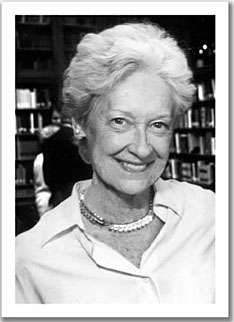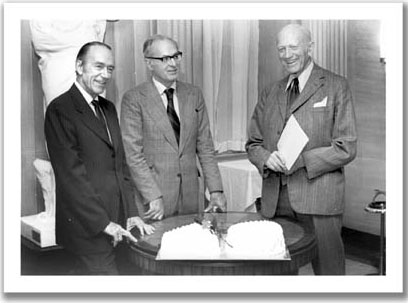|
6
| Neurosurgical Society, the American Academy of
Neurological Surgeons and the American Epilepsy Society. He received the Outstanding Achievement Award from both
the University of Minnesota and the University of Chicago and held honorary degrees from Edinburgh and
Umeå Universities. He served on the American Board of Neurological Surgery (1970-76) and on the Epilepsy
Advisory Committee of the National Institute for Neurological Diseases and Stroke (1972-76). He was awarded
the distinction of Emeritus Professor at McGill in 1980, and selected for the Distinguished Service Award of
the Society of Neurological Surgeons in 1989. |

Catherine Archibald-Rasmussen,
wife of Theodore Rasmussen.
|
Envoi
In 1947 Theodore Rasmussen married
Catherine Archibald of Truro, Nova Scotia. With a son and three
daughters they enjoyed a full family life. They devoted much of their
time to entertaining the Fellows and visiting former Fellows of
the Neuro. They were both enthusiastic sports, enjoying
skiing, scuba diving and boating. Kay became a skilful
photographer. Ted kept up his keen interest in jazz, able to recall names
of famous instrumentalists and reciting the exact records of
many champions in track and field events.
When Catherine predeceased him in 1998,
Theodore moved to Calgary to be with his daughters and their
families who provided him with comfort and love in his retirement years.
He kept in touch with his many colleagues and students in
all parts of the world by methodical correspondence. He took
great satisfaction in the establishment of a Theodore
Rasmussen Reading Room in the Library at the Neuro, furnished by
his former residents, and in the annual Theodore Rasmussen
Lecture on Neurosurgery. Ted Rasmussen will be warmly
remembered by his family, friends, colleagues, students and patients, for
his wisdom, modesty and gentleness. He died on
23rd January 2002 from complications of prostatic cancer.
|
|
|
Theodore Rasmussen, William
Feindel and Wilder Penfield at
the
40th Anniversary of the MNI. Dr
Penfield used this photo in his
book,
No Man Alone, and commented,
"When I study the photograph ...
I can discover little evidence that
either hard work or success has
weighed very heavily upon
anyone
of the three directors". (1970)
|

|
|